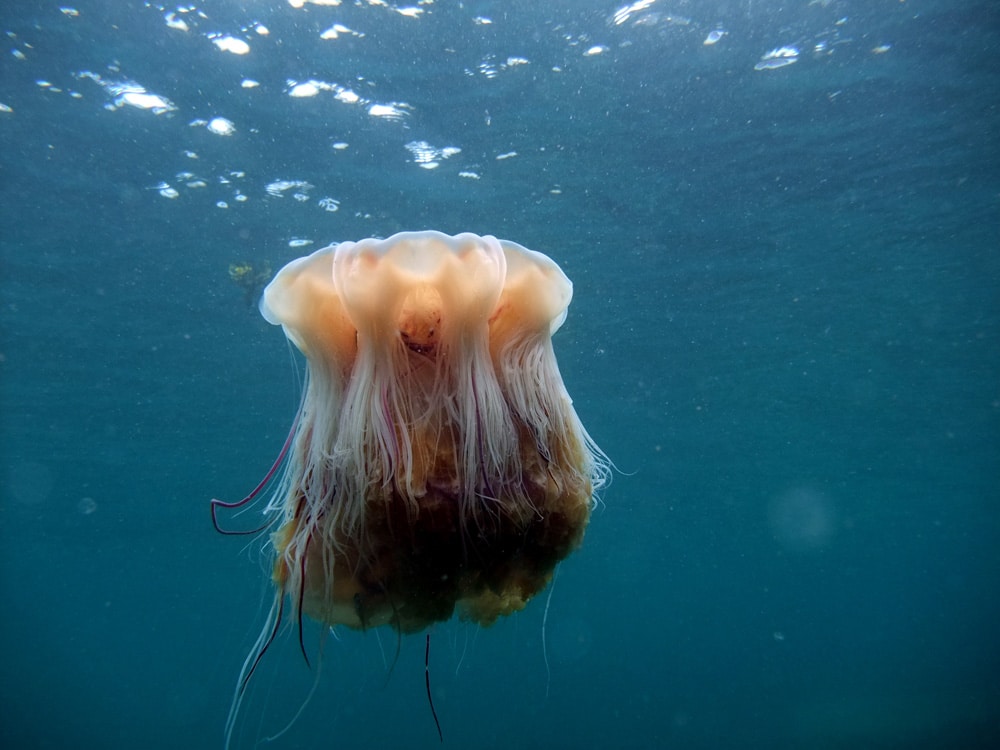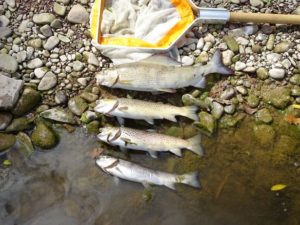How well do you know your jellies?

With swarms of jelly being spotted off the Devon coast, jellyfish season is well and truly upon us and you’re likely to see more jellyfish around UK shores. The Marine Conservation Society is calling on beachgoers to report jellyfish sightings on the charity’s website as part of its national Jellyfish Survey.
This year the charity is also testing the public’s jellyfish identification skills. Teaming up with the University of Plymouth, the Marine Conservation Society has launched an online Jellyfish ID Quiz to understand how easy it is for people to identify UK jellyfish with a view to improving the survey.
According to Scubaverse, the Jellyfish Survey started in 2003 with the intention of understanding more about the distribution of jellyfish in the UK’s waters and how this affects leatherback turtles. Leatherbacks migrate to UK waters to feed on plentiful jellyfish bloom through the summer. However, with limited data on where these blooms happened, the Marine Conservation Society sought to gather data to identify potential feeding hotspots for leatherback turtles.
To date, thousands of people have shared sightings of jellyfish from around the UK, helping to build an extensive data set of six jellyfish and two jellyfish-like hydrozoan species.
 “We’ve been running our National Jellyfish Survey citizen science programme for more than 17 years and, thanks to the participation of thousands of jellyfish spotters sending us their records, we are now starting to understand more about our UK jellyfish species,” says Dr Peter Richardson, Head of Ocean Recovery at the Marine Conservation Society.
“We’ve been running our National Jellyfish Survey citizen science programme for more than 17 years and, thanks to the participation of thousands of jellyfish spotters sending us their records, we are now starting to understand more about our UK jellyfish species,” says Dr Peter Richardson, Head of Ocean Recovery at the Marine Conservation Society.
“As we start to enjoy the UK’s beautiful beaches again this year, we want as many beachgoers as possible to get involved and send us their jellyfish records. Remember, you can look, but please don’t touch the jellyfish…some have a painful sting.”
Understanding trends in jellyfish distribution and numbers can help with more than just understanding leatherback turtles. Large jellyfish blooms can have real economic impacts on marine industries, and may also indicate the impacts of climate change on our ocean.
In 2014, with partners from the University of Exeter, the Marine Conservation Society published the first paper from the survey data, confirming key information about UK jellyfish and including the first distribution maps of the surveyed species. The paper confirmed, for example, that adult barrel jellyfish have a largely western distribution in UK seas and can survive UK winters.
 The paper also identified south-west England and Wales as a jellyfish hotspot, where other work has shown a relatively high probability of leatherback turtle sightings for the UK.
The paper also identified south-west England and Wales as a jellyfish hotspot, where other work has shown a relatively high probability of leatherback turtle sightings for the UK.
Since the 2014 paper, the Jellyfish Survey has recorded notable jellyfish events such as massive and extensive annual blooms of barrel jellyfish and several summers of mass strandings of Portuguese Man o’ War.
The University of Plymouth is working with the Marine Conservation Society to analyse this most recent data. The charity hopes to run the Jellyfish Survey over a long time period to see what happens to the distribution and frequency of mass jellyfish blooms over time and attempt to explore any links with big-picture factors such as climate change, according to Scubaverse.
The Marine Conservation Society wants to continue building on this survey data, helping to develop an ongoing understanding of jellyfish trends in UK seas. To ensure that the survey is as easy-to-use as possible, the charity is also asking members of the public to take the Jellyfish ID Quiz. Working with experts at Plymouth University, the quiz aims to find out how easy it is for people to identify the eight jellyfish and jellyfish-like species that visit the UK using the photo ID guide, with the intention to update and improve the Jellyfish Survey so it can run for many more years to come.
“Citizen science is a really valuable way to gather information and engage people with the marine environment, so we want to make sure the national Jellyfish Survey is as engaging and easy to use as possible, says Catriona Duncan, MSc Student at the University of Plymouth. “Jellyfish are an animal so many of us are familiar with, but surprisingly little is known about their distribution around UK waters and what causes them to bloom and increase in numbers. This project is a fantastic opportunity to help find ways to improve the survey and encourage more people to get involved for years to come.”










